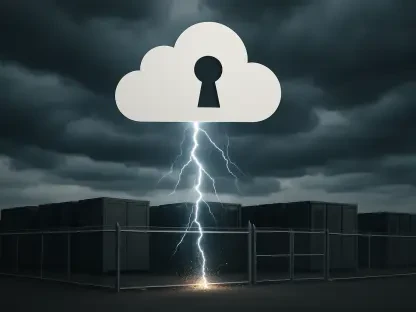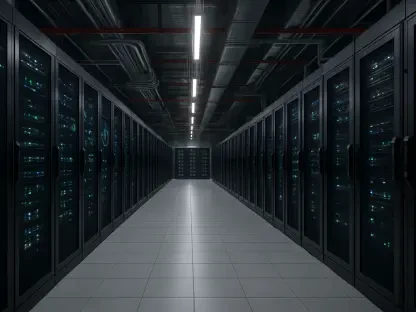The world of the Internet of Things (IoT) is always evolving, and one of the most notable transformations is happening within the LoRaWAN (Long Range Wide Area Network) ecosystem. Originally driven by tech enthusiasts and small developers, LoRaWAN has made significant strides in becoming a robust solution for enterprise applications. The recent The Things Conference in Amsterdam showcased this transition, highlighting key developments and emerging trends.
The Rise of LoRaWAN
An Overview of LoRaWAN’s Journey
LoRaWAN has emerged as the leading protocol for wide-area IoT networking. It’s celebrated for its long-range capabilities, low power consumption, and capacity to operate unaffected in diverse environments. Devices using LoRaWAN can communicate over distances up to 15 kilometers, making the technology ideal for remote and rural applications. Additionally, the protocol’s open nature has been a key driver behind its wide adoption, setting it apart from other standards like NB-IoT (Narrowband IoT). Unlike NB-IoT, which necessitates service provider contracts, LoRaWAN enables users to set up and manage their networks using open-source software and hardware.
In its early stages, LoRaWAN thrived in a community-driven atmosphere. Hobbyists and small developers drove innovation, creating custom solutions often based on platforms like the Raspberry Pi. These early networks were experimental, featuring DIY hardware solutions and open-source backend stacks. At this juncture, the emphasis was largely on the potential and flexibility that LoRaWAN offered. The community aspect was crucial, fostering rapid innovation and the exchange of ideas. However, these grassroots efforts gradually set the stage for a more structured, enterprise-oriented approach, paving the way for broader applicability in commercial environments.
Community Beginnings
In its nascent years, LoRaWAN was predominantly characterized by a culture of experimentation and mutual learning among hobbyists and small developers. These early adopters played a pivotal role in exploring the potential applications of LoRaWAN, often leveraging versatile platforms such as the Raspberry Pi to build custom solutions. Early networks were largely speculative, featuring DIY hardware and open-source backend systems. The community-driven approach fostered an environment where innovation thrived, as ideas and techniques were freely exchanged, leading to rapid advancements.
Despite its grassroots origins, the enthusiasm and creativity within the community paved the way for grander aspirations. While the initial focus was on flexibility and feasibility, the community efforts laid crucial groundwork for LoRaWAN’s transition to more structured, enterprise-level applications. The DIY nature of these early projects highlighted the protocol’s strong points, such as low power consumption, long-range communication capabilities, and openness. These attributes made it an attractive option for various applications, setting the stage for a shift toward more polished, commercial solutions.
Transition to Enterprise Solutions
The Shift to Commercial Products
The landscape of LoRaWAN has dramatically shifted from DIY projects to enterprise-ready solutions. The Things Conference is a prime showcase of this transformation. Bare circuit boards and DIY kits are being replaced by polished, commercial-grade products designed for deployment in business environments. One particularly striking example of this evolution is The Things Network’s new Things Indoor Gateway Pro, a third-generation gateway with “zero touch” provisioning tailored for enterprise applications. This sophisticated device symbolizes the journey from community-driven initiatives to highly integrated, commercial solutions that are ready for large-scale deployment.
Such advancements underscore the market’s shift towards solutions that address enterprise needs, prioritizing reliability and ease of deployment. The shift is not just about aesthetic improvements but also involves crucial enhancements aimed at simplifying the implementation process. Features like “zero touch” provisioning are indicative of the broader move toward making LoRaWAN more accessible and viable for enterprise-level applications. This evolution from experimental to enterprise-ready technology marks a significant milestone in LoRaWAN’s journey, showcasing the ecosystem’s capacity for rapid maturation and adaptation.
Commoditization and Product Maturity
The current state of the LoRaWAN ecosystem is marked by increased product commoditization and maturity. Companies like RAK Wireless are leading the charge with user-friendly, application-centric devices. For instance, their “peel and stick” trackers such as the RAK2270 provide real-time tracking with minimal setup effort. These user-friendly products indicate a significant leap forward in terms of usability and application focus, as they allow consumers to deploy IoT solutions with minimal technical know-how. These advancements signify a shift in focus from foundational hardware to comprehensive solutions crafted to address specific use cases, reflecting the technology’s growing maturity.
As the infrastructure around LoRaWAN solidifies, innovation is gravitating towards application-centric developments rather than foundational hardware solutions. Products are becoming more refined, focusing on integration and ease of use to better serve the needs of enterprise clients. This shift is pivotal for the technology’s adoption in various industries, as it simplifies implementation procedures and reduces barriers to entry. The push towards commoditization and product maturity not only highlights LoRaWAN’s adaptability but also positions it as a reliable technology platform capable of supporting a wide array of industrial applications.
Emerging Trends in LoRaWAN
Energy Harvesting Technologies
One of the most promising trends in LoRaWAN is the development of energy harvesting solutions. These technologies aim to overcome the traditional limitation of battery dependency in IoT devices. At The Things Conference, Dracula Technology showcased their LAYER photovoltaic solution capable of harvesting energy from low light conditions and integrating super-capacitors through inkjet printing. This innovation could revolutionize IoT by enabling ultra-low-power devices that operate independently of conventional battery sources.
The potential of energy harvesting solutions extends beyond merely overcoming battery limitations. By harnessing environmental energy, devices can achieve longer operational lifespans and reduced maintenance requirements. This advancement represents a significant step forward in addressing some of the persistent challenges in IoT deployments, particularly around sustainability and longevity. The deployment of such technology could lead to a more autonomous, reliable, and efficient IoT ecosystem, where the need for frequent battery replacements becomes obsolete. This would be particularly beneficial for applications in remote or hard-to-reach areas, where maintaining power sources can be financially and logistically challenging.
Satellite Connectivity and Extended Coverage
The need for global coverage has pushed the boundaries of LoRaWAN’s capabilities. Lacuna Space has been at the forefront, offering a hybrid approach that combines terrestrial LoRaWAN with satellite connectivity. This innovative setup ensures that devices can remain connected regardless of location, significantly expanding the potential applications of LoRaWAN. By integrating satellite connectivity, Lacuna Space provides a reliable solution for remote monitoring in sectors such as agriculture, logistics, and environmental observation.
Since 2020, Lacuna’s solution has demonstrated the viability of seamless switching between terrestrial and satellite networks. This extended coverage is crucial as it enables consistent data transmission in areas where traditional terrestrial networks fall short. The dual-connectivity approach exemplifies the kind of innovative thinking that is driving the evolution of LoRaWAN, furthering its capacity to serve diverse and challenging environments globally. The move towards extended coverage not only broadens the scope of potential applications but also underscores the adaptability and forward-thinking nature of the LoRaWAN ecosystem.
From Products to Holistic Solutions
Integration of Advanced Technologies
As the LoRaWAN market matures, the emphasis is shifting from standalone products to integrated solutions. Companies are now focusing on combining multiple cutting-edge technologies to offer seamless and scalable solutions for real-world applications. This integration plays a vital role in the broader adoption of LoRaWAN in various industries. The transition towards holistic solutions underscores LoRaWAN’s evolution from an experimental framework to a robust, enterprise-ready technology.
This shift is essential for meeting the diverse needs of IoT applications, from smart cities to industrial automation. The integration of advanced technologies allows for more comprehensive and reliable solutions, addressing not just the need for connectivity but also aspects related to power management, data security, and ease of deployment. As these comprehensive solutions become more sophisticated, they facilitate a smoother transition for enterprises looking to adopt IoT technology. This holistic approach is crucial for driving further innovation and ensuring that LoRaWAN remains at the forefront of IoT advancements.
The Role of Conferences and Community
The Internet of Things (IoT) landscape is constantly evolving, and a significant transformation is taking place within the LoRaWAN (Long Range Wide Area Network) ecosystem. Initially propelled by tech aficionados and small-scale developers, LoRaWAN has advanced remarkably to become a compelling solution for enterprise-level applications. This shift was prominently showcased at the recent The Things Conference in Amsterdam, which underscored notable progress and emerging trends within this technology.
LoRaWAN, known for its ability to facilitate long-range communication with low power consumption, has captured the interest of large corporations looking to implement smart solutions in various sectors such as agriculture, smart cities, industrial automation, and logistics. At the conference, experts highlighted how LoRaWAN is becoming increasingly reliable and scalable, making it a fit for mainstream business operations.
The event served as a platform for discussing the latest innovations and developments, including improvements in network security, advancements in device interoperability, and more efficient data management solutions. As LoRaWAN continues to mature, it plays a key role in connecting a multitude of devices, making it integral to the expanding IoT universe.









